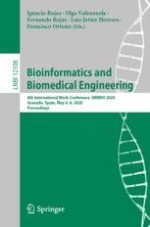2020 | OriginalPaper | Buchkapitel
Evaluating Basic Next-Generation Sequencing Parameters in Relation to True/False Positivity Findings of Rare Variants in an Isolated Population from the Czech Republic South-Eastern Moravia Region with a High Incidence of Parkinsonism
verfasst von : Radek Vodicka, Kristyna Kolarikova, Radek Vrtel, Katerina Mensikova, Petr Kanovsky, Martin Prochazka
Erschienen in: Bioinformatics and Biomedical Engineering
Aktivieren Sie unsere intelligente Suche, um passende Fachinhalte oder Patente zu finden.
Wählen Sie Textabschnitte aus um mit Künstlicher Intelligenz passenden Patente zu finden. powered by
Markieren Sie Textabschnitte, um KI-gestützt weitere passende Inhalte zu finden. powered by
